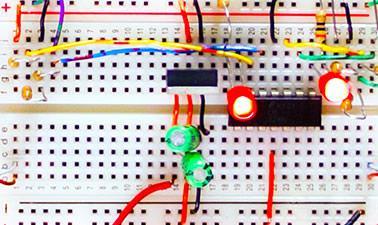
We start with essential theory and develop an understanding of the building blocks of electronics as we analyze, design, and build different parts of a robot from scratch around the Texas Instruments MSP430 micro controller.
Useful mathematics will be discussed where appropriate, but only a working knowledge of high school algebra is required to follow along. More experienced students will be able to dig deeper into optional modules that cover advanced concepts in analog circuit design. Some of these have been developed by practicing engineers in industry who know the tricks of the trade and have decided to share some of their insights to enhance the course.
The philosophy of the course is to learn by doing, so every lecture features a substantial lab component. Students are invited to work together in small groups to build their own robots along with the instructors. There will also be individual circuit analysis and design exercises to reinforce the theories presented in the course. Those who successfully complete each theory assignment and earn a passing grade will get an honor code certificate from BerkeleyX.
Additionally, a kit of electronic components costing under is available from Newark element14. Ordering pages are now available for North America, Europe, and Asia regions. The kit is not necessary to obtain a certificate for this run of the course, but it will greatly enhance your learning experience. Additionally, some mechanical components are required to complete the robot as presented in the course. Also, the lab experience will be most effective if you have access to a digital multimeter and an oscilloscope. The NI MyDAQ with myProtoBoard has been made available for students who would like to use this measurement equipment to follow along with the course.
Creativity is encouraged! Students that are willing to work outside the bounds of the class to develop their own inventions will get the most out of this guided learning experience.
What you'll learn
- Fundamentals for engineering electronic interfaces between the physical world and digital devices
- Develop an understanding of the building blocks of electronics
- Analyze, design, and build different parts of a robot from scratch
